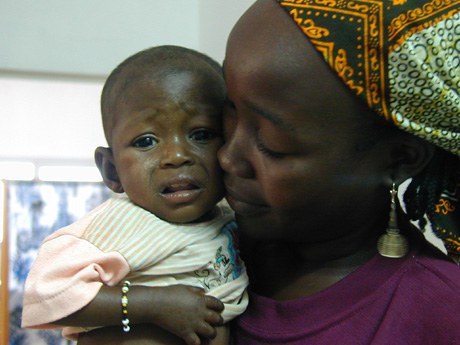
aidsfocus.ch: Position paper on HIV and AIDS treatment and care 2013
In the last ten years, the landscape of HIV has changed dramatically, for the better, especially in sub-Saharan Africa. Countries are making historic achievements towards ending the AIDS epidemic: 700 000 fewer new HIV infections across the world and a 50% reduction of new HIV infections in 25 low- and middle-income countries between 2001 and 2011!
In fact, what had taken a decade before is now being achieved in 24 months: The past two years have seen a 60% increase in the number of patients under life-saving antiretroviral treatment (ART), with more than 7 Mio people under ART by 2012. With 34 Mio people infected, HIV/AIDS remains the single most important reason for death and illness in Africa and one of the most dangerous diseases worldwide (1,7 Mio deaths in 2011)i, but, for the very first time, an AIDS free generation is in sight!
aidsfocus.ch, the Swiss platform on HIV/AIDS and international cooperation, declares its adherence to the following position, and it supports appeals and campaigns that are in line with this position
• Swiss and other Governments, stakeholders and civil society shall embrace the Millennium Development Goals (MDG) and United Nations Political Declaration on HIV/AIDS with determination and compassion, and fully commit to - by 2015 - a) halving sexual transmission and transmission amongst drug users b) ensuring that no child will be born with HIV c) getting 15 million people on ART d) halving deaths from tuberculosis among people living with AIDS e) reducing the resource gap by investing 22-24 Mrd USD/year in low and middle income country’s AIDS programs. It is important not only to maintain, but to increase efforts in the global AIDS response and give HIV and AIDS a key role in the post MDG agenda. We call upon implementers to prioritize cost effective high leverage interventions according to the UNAIDS investment framework.
• Antiretroviral therapy is the most important, cost effective and lifesaving intervention for patients with HIV. In addition to treating the virus, ART prevents the transmission of HIV: Treatment is prevention. ART is both a human right for those in need and a priority prevention tool. Together with behavior change (e.g. safe sex), bio-medical approaches (e.g. pre/post-exposure prophylaxis, vaccination) and structural interventions (e.g. rights-based framework, equity), ART is the key pillar of combination prevention and treatment. Demand for ART is rising and increasingly outstripping availability: Almost half of those in need did not have access to ART in 2012. Bold measures should be taken to quickly scale up equitable access to HIV treatment and care irrespective of race, gender, age or income.
• 330 000 children have acquired HIV in 2011, 90% of them in Sub Saharan Africa. All these infections are unnecessary: Rich countries have reduced mother to child transmission rates from 40 to <2% - the elimination of childhood HIV infections is perfectly possible. To reach the global goal of zero new infections among children by 2015, four key actions are needed: (1) strengthen HIV prevention to ensure that women and their partners avoid HIV infection, (2) meet the unmet need for family planning among women living with HIV, (3) provide testing, counseling and antiretroviral medicines to pregnant women living with HIV to prevent transmission to their children and (4) ensure proper and timely HIV care, treatment and support for women living with HIV, children living with HIV and their families.
• Success and sustainability of HIV programs depend on strong and robust health systems. We call upon an integrated, diagonal rather than vertical approach to HIV, taking “AIDS out of isolation” and eliminating parallel systems for HIV related services. Such an approach will increase the impact of the AIDS response, leverage HIV-related gains to broader health and development advances, and enhance sustainability. HIV programmes need to monitor both their positive and negative systemic effects and increasingly seek to actively strengthen people centered health systems. Human resources, drugs, technologies and equipment, service delivery, financing, health information and psychosocial support and governance are key elements in such a “systems thinking” approach.
• Rapid progress in HIV treatment and care would not have been possible without accelerated scientific development. Putting such complex scientific knowledge into policy and practice is challenging: Good and constant communication between researchers, policy makers and implementers is needed. At the same time, medical science is challenged to continuous research and gather new insights. Further basic, clinical and operational research is needed and ongoing. In this respect, Switzerland has an important role to play: As host country to many pharmaceutical companies and research groups, Swiss authorities can and should play a central role, both in the domain of research and development, as well as in the promotion of affordable access to ART and just interpretation of patent laws.
aidsfocus.ch, Swiss platform on HIV/AIDS and international cooperation, April 2013
 aidsfocus.ch Position paper on HIV and AIDS treatment and care 2013.pdf
— (49 kB)
aidsfocus.ch Position paper on HIV and AIDS treatment and care 2013.pdf
— (49 kB)
